Without competent post-cleanup procedures, no paint work is finished. So, if you don’t want to buy a new brush the next time you need to paint something, cleaning your polyurethane brush is crucial. Therefore, keeping a clean polyurethane brush will assist you have a paint brush available in your shop in the future.
Having said that, the first step in learning how to clean polyurethane brush bristles is to recognize the various substances to which your brush has been exposed. To avoid paint on the bristles hardening, it is ideal to remove polyurethane from brush hairs as soon as you are through painting. Notably, all those chemicals in paint ultimately damage your brush when they solidify on it.
In this context, we’ll concentrate on how to clean a polyurethane brush both right away and even after the polyurethane has dried on it. Bottom line: Just like you always maintain your blades sharp, brush bristles need to be cleaned up after usage. Nevertheless, let’s comprehend the idea of polyurethane in order to realize what we are working with.
What Is Polyurethane?

A liquid coating called polyurethane is used to keep wood or painted surfaces looking new. Therefore, this chemical is essential for preserving and updating wooden surfaces. It’s vital to remember that polyurethane is thick in substance and difficult to handle. Polyurethane is therefore more demanding than regular paint.
The cleaning procedure is one of the demanding features of polyurethane. In order to guarantee that polyurethane brush residues are disposed of securely, you need a suitable cleanup process. Let’s go on to the specifics of a decent clean-up so that you can understand the challenges associated with treating this chemical.
About Polyurethane Brushes
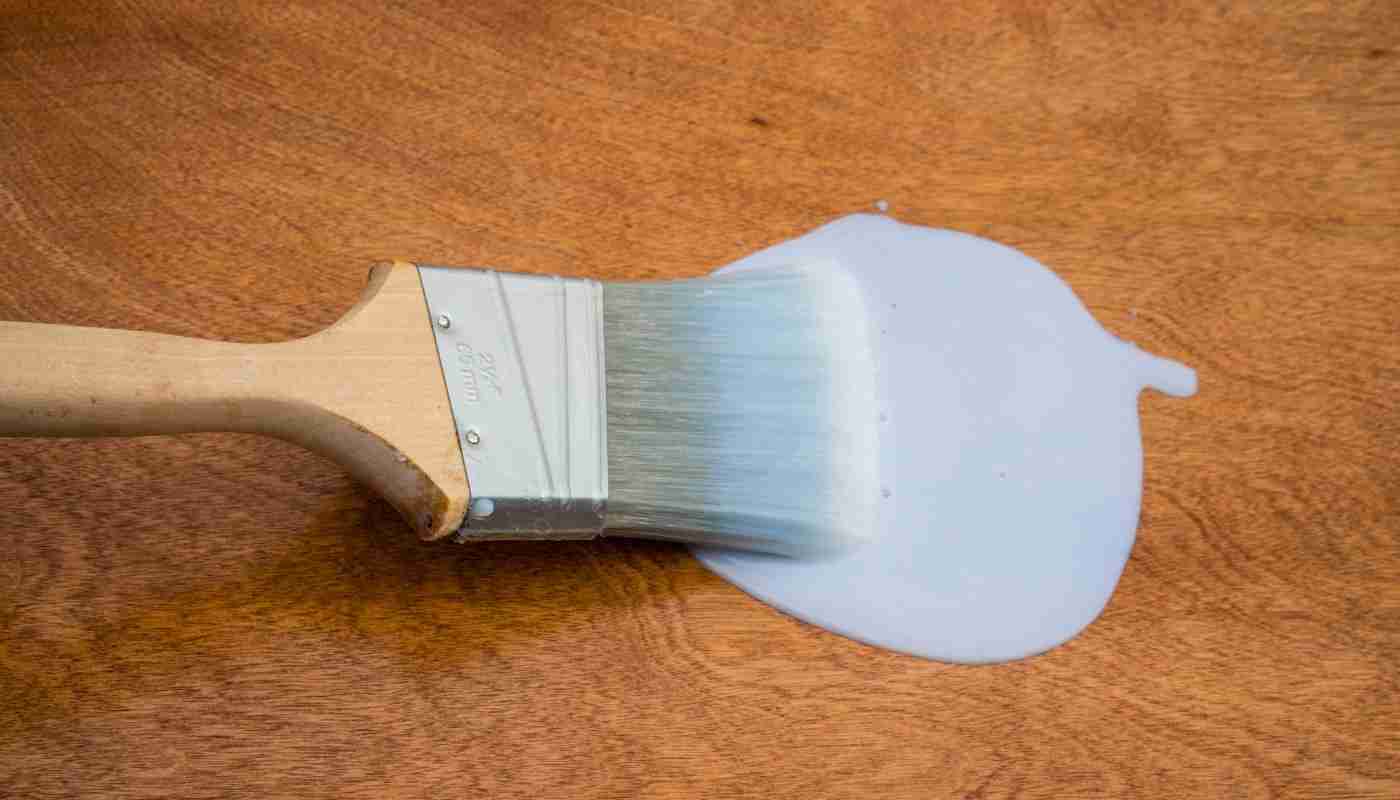
There are many different sizes and types of polyurethane brushes. The round brush, which is the most popular kind, is used to apply polyurethane to tiny areas.
Flat brushes are also available; these work well on broad surfaces. Angled brushes are another option that can fit into small places.
It’s crucial to get a quality brush that has the appropriate size and form for the task. If you don’t, your finish can be inconsistent. Therefore, take into account the kind of job you’re working on and select a brush accordingly.
To ensure that polyurethane brushes remain effective for as long as possible, you should carefully clean them after use.
Once the brush bristles have dried, any remaining polyurethane is challenging to remove, and over time, this hardened polyurethane can harm the brush.
If you want your polyurethane brush to survive, you should always clean it as thoroughly as possible as away after using it.
What Type of Brush do you Need to Apply Polyurethane?
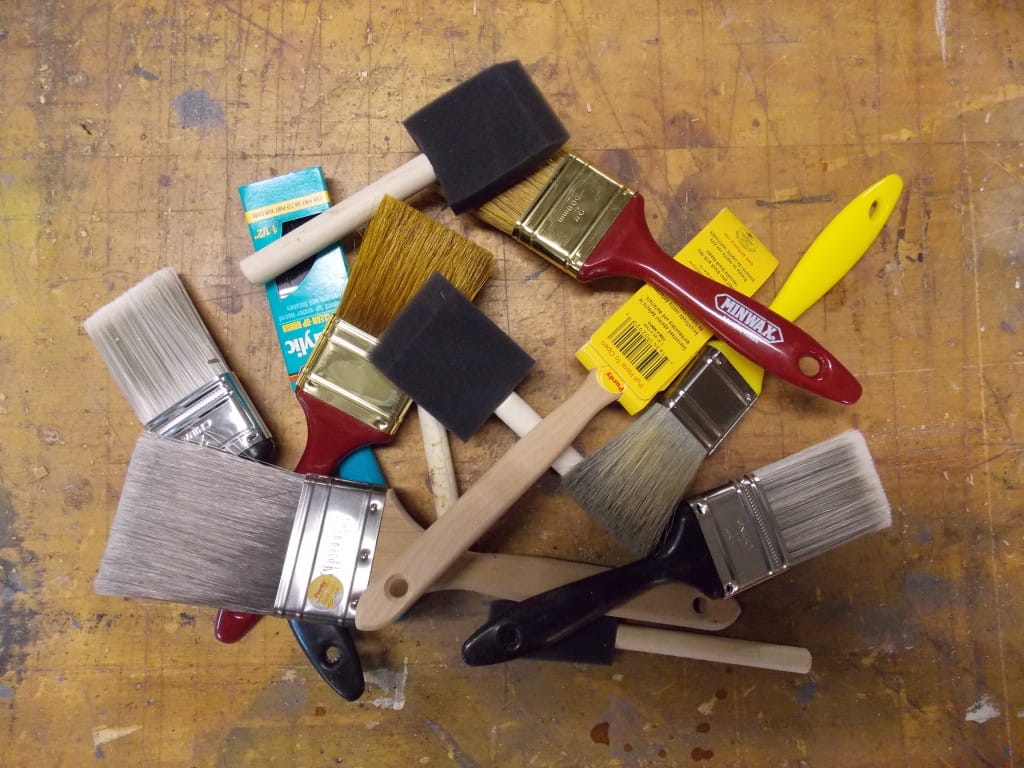
When applying polyurethane, a variety of brushes can be utilized. The best brush to use for applying oil-based polyurethane is one with natural bristles. They are more suited to absorbing and spreading oil finishes since they are constructed with animal hair.
Natural bristles have the drawback of being rather pricey, therefore it’s crucial to treat them well.
For applying water-based finishes, synthetic bristles—in particular synthetic nylon bristles—work well. The ideal brush for polyurethane that is based on water is one like this one since it does not absorb a lot of moisture.
Natural bristles are arguably more flexible, provide a more uniform coat, and are more expensive than synthetic bristles. It’s time to research the best ways to clean polyurethane brushes now.
Cleaning Water-Based Polyurethane
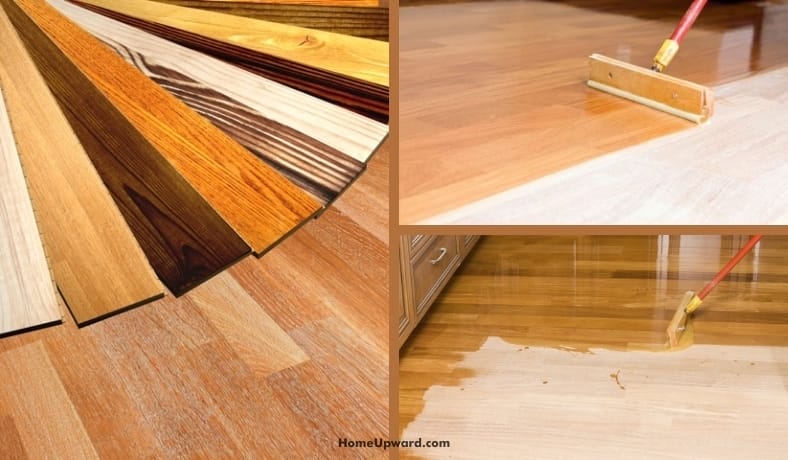
The ease of handling of water-based poly makes the first process less labor-intensive. However, you should double-check your polyurethane bottle to make sure it’s oil- or water-based as the initial step. As a result, in this situation, all you need to clean your brush with is water. However, there is a procedure to adhere to for the best results and safety.
Start by adding water to your container so that you may clean your brush. After that, thoroughly rinse your brush in the container with your gloves on to get rid of any leftover water-based polyurethane. Use clean water each time you go through the first step, and repeat it around four times. Ideally, you will be able to tell when to stop when your water is still pure and unclouded.
Go to your sink area and give it a good flush with clean running water to make sure all of the water-based polyurethane has been eliminated. Any leftover poly residues will be removed from your brush during this subsequent process. To prevent paint from splattering everywhere, use caution while using the sink. In general, make sure to put on your gloves at each stage while wringing out your brush as much as you can.
You could opt to let your polyurethane brush soak in water occasionally. To completely remove the water-based polyurethane from the brush hairs, you can keep it soaking for a while. However, you shouldn’t soak for an excessively lengthy period of time since prolonged contact with moisture might bend the bristles.
Cleaning Oil-Based Polyurethane
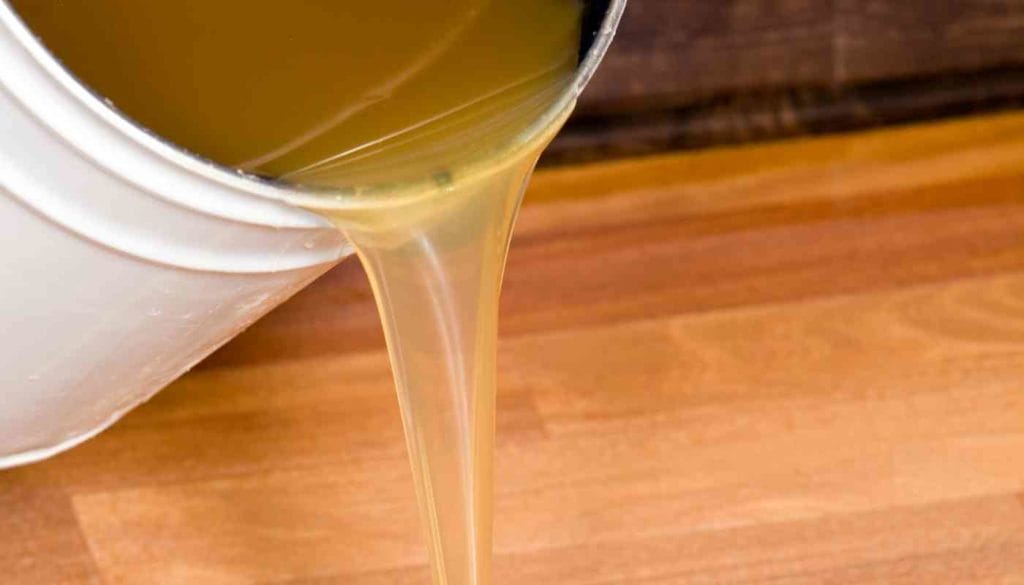
Oil-based polyurethane can’t be cleaned with water alone, as was previously said. For freshly applied polyurethane in particular, the first step is to soak your brush in paint thinner for a few hours. You can’t get rid of polyurethane from brush hairs without paint thinner since it is an oil solvent. After giving your brush a thorough bath, run your fingers through its hairs to make sure all the oil-based polyurethane is still in the thinner.
Apply some acetone on the brush to remove the thinner after thoroughly rinsing it and rubbing it in the thinner. The last wash should be done with water and dish soap after the acetone wash. Once more, acetone is removed using water and soap. Even with high-quality brushes, this last step could seem excessive, but it is important for longer service.
Soap will assist in the last washing stage in softening the bristles to preserve their flexibility for future usage. To finally get rid of the soap traces, wash the polyurethane brush hairs with water. To completely remove polyurethane from a brush, you should perform the water wash in a sink. You should keep your windows open and put on gloves and a dust mask while working on this project.
How to Clean a Brush Using a Brush Comb?
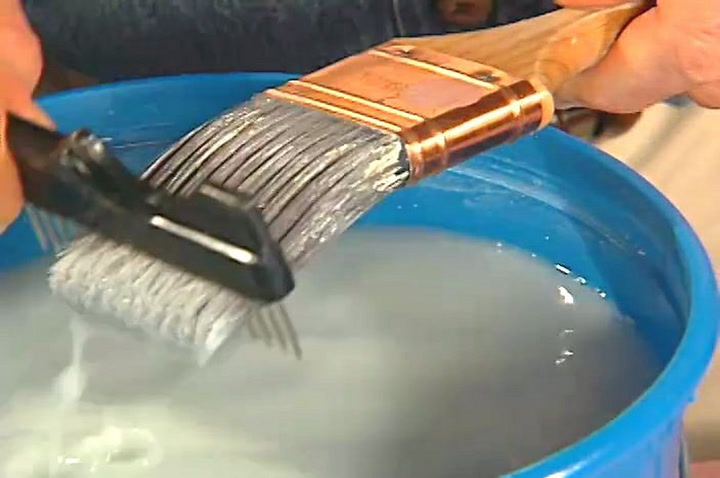
Consider purchasing a paint comb to make cleaning your brushes less difficult. This double-headed wire brush has stainless steel pins on one side and brass bristles on the other. It expedites the process of cleansing the brush’s bristles of paint or varnish. For instance, brush combs are available on Amazon.
The comb is designed to be softly placed into the bristles of the brush and continuously stroked downward to help remove any paint or varnish residue from the brush.
After using a clean towel to dry the brush, you may turn it upside down in an open jar so the bristles are facing up. The bristles will dry first in this manner, preventing the growth of mold and mildew.
This will ensure that your brushes may be used again for many years by cleaning the brush not only on the exterior but also on the interior bristles more quickly and completely than if you were to merely rinse it.
How to Prevent Polyurethane from Drying on a Brush?
There are a few ways to keep your brush ready for use the next day if you are halfway through a finishing or painting project and merely need to take a break for the night or a few hours.
Keeping your brushes in water or firmly covering the brush in some cling film food wrap should keep the air out sufficiently to keep the brush damp and in condition to be used the next day. Polyurethane only dries when exposed to air.
How To Clean Polyurethane Off Hands?
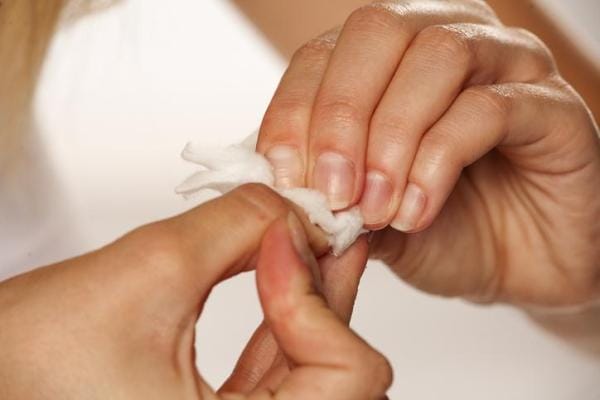
If you’re not a magician, you’ll actually have some polyurethane stains on your hands after working. If you’re not Harry Houdini, though, you’ll need to wash the polyurethane off of your hands.
Get a dish soap first that won’t irritate your skin. Lather it up on your palm after applying it. Wash both of your hands well, then dampen them.
To change the sticky sensation, try running a moisturizing lotion for optimal results. What Are the Different Types of Polyurethane and What Is a Polyurethane?
The market’s toughest finish, polyurethane, comes in first place. Additionally, it is one of the coatings used on wood surfaces that dries the fastest.
A polyurethane is so dependable that it will not change back to its liquid state after drying and hardening.
There are two different kinds of polyurethane: oil-based polyurethane and water-based polyurethane. Let’s examine each of these polyurethane varieties.
Polyurethane made using oil is known as an oil-based polyurethane. It is more affordable and robust than polyurethane with a water-based basis.
Water-base polyurethane: Compared to oil-based polyurethane, water-base polyurethane offers several advantages. It has a low level of toxicity and smell. A water-based polyurethane may also be removed more easily than an oil-based polyurethane.
Remarkably, the water-base polyurethane is colored like milk. It turns out that as the solvent dries up on the wood, the milky hue fades. Therefore, there is no need to be concerned that the polyurethane would alter the appearance of your work.
Why do you need to clean polyurethane brushes after every use?
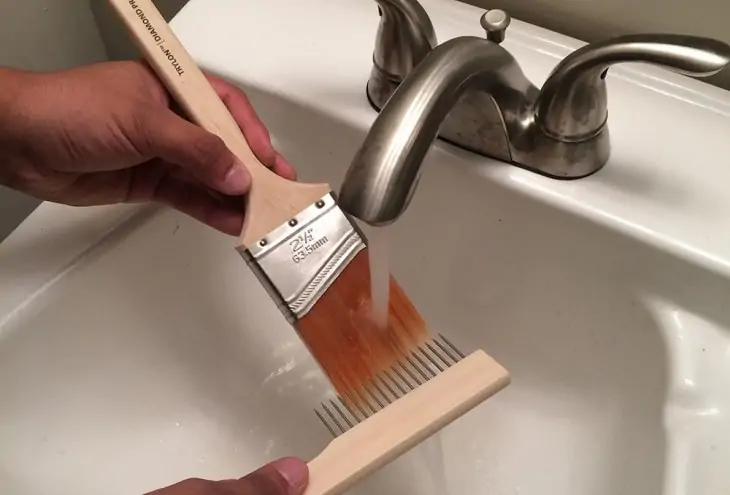
Your polyurethane brush should be thoroughly cleaned after each use to avoid the bristles becoming clogged with dried paint, varnish, or other materials. Clumps may result in a brush losing its form over time.
Furthermore, if you don’t frequently clean the brush, the material buildup may make it challenging to apply a uniform coat of paint or varnish.
There may be additional solid reasons to maintain the cleanliness of your polyurethane brush, depending on your craft or pastime.
For instance, woodturners apply lubrication using brushes because lubricant inhibits overheating. You also need the suitable polyurethane brush to apply it correctly.
Everyone benefits when your brushes are clean and ready to use since you’ll be more productive and pay less on replacements.

